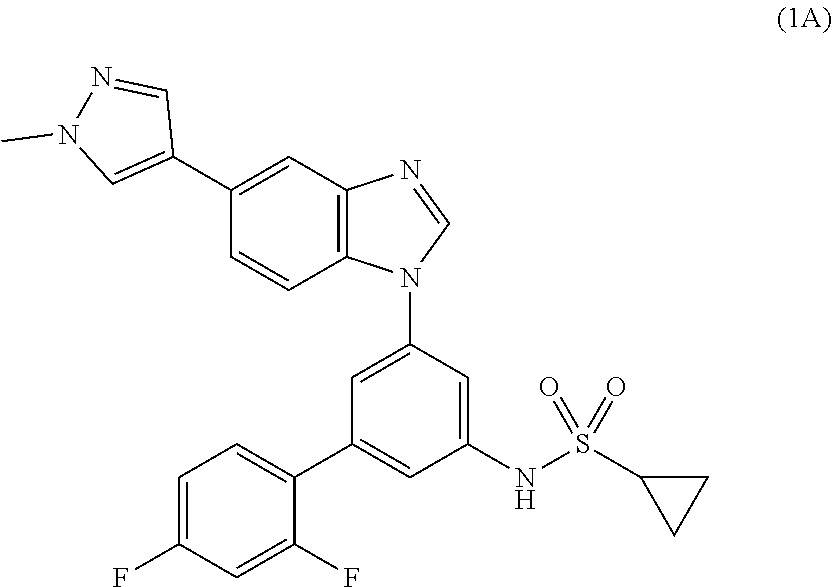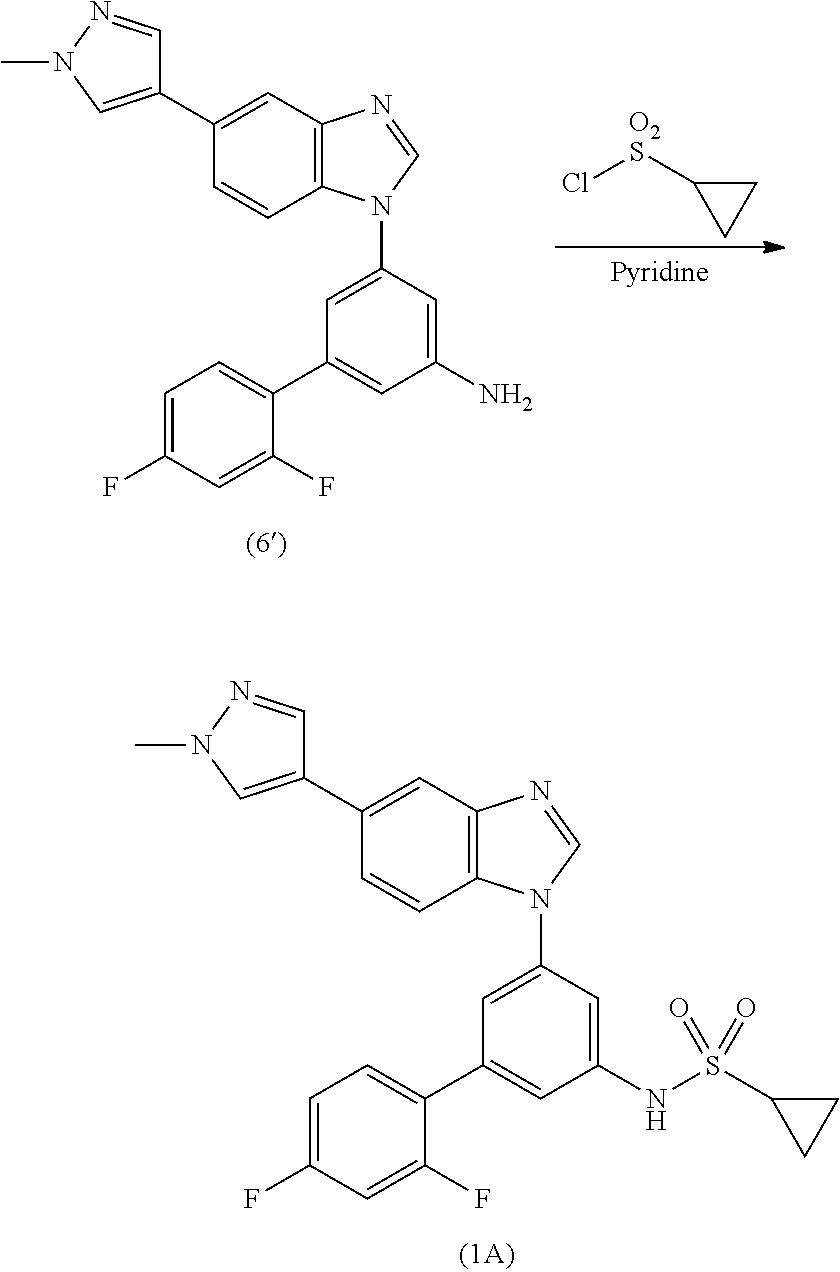Process for the preparation of a sulfonamide structured kinase inhibitor
a kinase inhibitor and structured technology, applied in the field of process for the preparation of sulfonamide structured kinase inhibitors, can solve the problems of poor yield (45%, low yield), and purification of products by chromatography, and achieve the effect of convenient and economical use and large-scale application
- Summary
- Abstract
- Description
- Claims
- Application Information
AI Technical Summary
Benefits of technology
Problems solved by technology
Method used
Image
Examples
example 1
on of 1-Bromo-3,5-dinitrobenzene (VII)
[0057]To an inerted (N2) flask was added concentrated sulfuric acid (500 mL) followed by 1,3-dinitrobenzene (100 g, 1 equivalent). The mass was stirred until complete dissolution. The mass was cooled to 15±5° C. and acetic acid (200 mL) was added. The mass was further cooled to 0±5° C. 1,3-Dibromo-5,5-dimethylhydantoin (130.9 g, 0.77 equivalents) was added in five equal parts at 15 min intervals. The mass was stirred for 1 h and then warmed to 25±5° C. over several hours followed by stirring for 24 h.
[0058]To another flask was added water (1 L) which was cooled to 5±5° C. The reaction mass was added to the cold water over 1-2 h while maintaining the temperature <20° C. The resulting slurry was stirred for 1 h at 255° C. The product was collected by filtration and washed with water (500 mL).
[0059]A flask at 25+5° C. was charged with water (1 L) followed by sodium bicarbonate (100 g) and stirred until complete dissolution. The wet cake obtained ab...
example 2
on of 2,4-Difluoro-3′,5′-dinitro-1,1′-biphenyl (VI)
[0061]To an inerted (N2) flask was charged acetonitrile (600 mL), water (10 mL) and triethylamine (169.5 mL, 3 equivalents). I-Bromo-3,5-dinitrobenzene (VII) (100 g, equivalent) was added and the mass was heated to 70±5° C. under nitrogen atmosphere. The solution was stirred for 30 min prior to cooling to 15±5° C. 2,4-Difluorophenylboronic acid (76.7 g, 1.2 equivalents) was added followed by palladium (II) acetate (1.28 g, 0.0047 equivalents). The mixture was heated to reflux (80-85° C.) over 2 h and maintained for 5-6 h. The mass was cooled to 25±5° C. followed by addition of diethanolamine (68.1 g, 1.6 equivalents) and water (550 mL). The mass was stirred for 1 h after which the solids were collected by filtration and washed with water (210 mL). The crude product was dried in a vacuum oven for 6 h at 45±5° C.
[0062]An inerted flask was charged with acetonitrile (210 mL) and the crude product. The mass was heated to reflux (85+5° C....
example 3
on of 2′,4′-Difluoro-[1,1′-biphenyl]-3,5-diamine (V)
[0063]Ethyl acetate (1000 mL), 2,4-Difluoro-3′,5′-dinitro-1,1′-biphenyl (VI) (100 g, 1 equivalent) and Pd / C (5 g, 10% Pd on carbon, 50% water wet) were charged into an inerted (N2) autoclave. The system was flushed with nitrogen several times prior introducing hydrogen (5 bar). The reaction mass was heated to 40-45° C. and stirred for 5-7 h. After completion of the reaction the system was thoroughly flushed with nitrogen and the system was cooled to 25±5° C. The catalyst was filtered off and washed with ethyl acetate (250 mL). The filtrate was washed with water (2×700 mL). Activated charcoal (5 g, 5 w-%) was added and the mixture was stirred for 1 h. The charcoal was filtered off and washed with ethyl acetate (250 mL). Ethyl acetate was distilled off under vacuum (T<45° C.). Toluene (200 mL) was added and distilled off under vacuum (T<45° C.). Toluene (200 mL) was added and the mixture was heated to 40±5° C. The mass was stirred fo...
PUM
 Login to View More
Login to View More Abstract
Description
Claims
Application Information
 Login to View More
Login to View More - R&D
- Intellectual Property
- Life Sciences
- Materials
- Tech Scout
- Unparalleled Data Quality
- Higher Quality Content
- 60% Fewer Hallucinations
Browse by: Latest US Patents, China's latest patents, Technical Efficacy Thesaurus, Application Domain, Technology Topic, Popular Technical Reports.
© 2025 PatSnap. All rights reserved.Legal|Privacy policy|Modern Slavery Act Transparency Statement|Sitemap|About US| Contact US: help@patsnap.com



